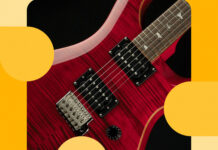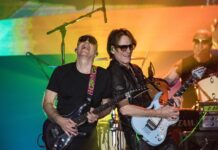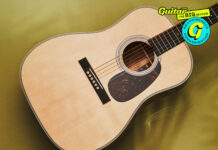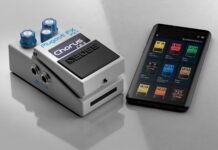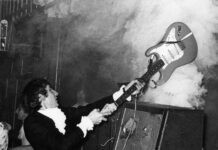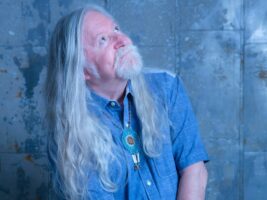
Why everyone is wrong about the iconic ‘Spirit In The Sky’ guitar sound
Over the decades Norman Greenbaum’s iconic psychedelic tinged 1970 hit, Spirit In The Sky has fuelled much debate on internet forums and among guitar enthusiasts, regarding how its uniquely sounding fuzz tone as heard on the song, in particular, it’s opening hypnotic guitar riff which underpins much of the song, was created.
READ MORE: Chris Buck’s five top tips to improve your guitar solos
Many theories have been put forth, everything from it being a Gibson Maestro Fuzz pedal, to an amplifier speaker that had slots cut into it with a razor blade, to it being simply a Jordan Bosstone plugged into the guitar jack.
Spirit In The Sky is not a song short on debate – the song’s religious overtones have been at various times cited or dismissed for playing a key role in the development of the now globally influential Christian rock genre.
“It came out around the same time, maybe a year or two earlier,” Greenbaum recalls today. “To put that type of music to a religious lyric, hadn’t been done before. But in terms of being that type of music put to a religious theme song, and especially the fuzz box, it was the first of its kind.”
Hitch Your Wagon
The initial idea for the song came to Greenbaum from an unlikely source. “I had come across a greeting card of two American Indians sitting at their teepee with a little fire looking up to the sky, and beneath it was written, ‘spirit in the sky’, he remembers. “So ‘I go, oh, that’s quite interesting as everybody has their own way of God’. And as I liked country music too, I had watched this TV show, The Porter Wagoner Show where halfway through the show, Porter would always perform a gospel song. And on one particular episode, he had sung a song about a man who hadn’t been down to the church for many years. Until one day he went to the door of the church only to find a sign saying; ‘Pastor’s Absent on Vacation’. And I thought, ‘oh boy, that’s something for a song’.”
Once inspiration struck, Greenbaum picked up his guitar, and began writing the song’s lyrics. Needing music for it, he revisited a guitar riff he had in his bag of ideas, that until now, he hadn’t been able to put to use.
“The opening lick of the song, I had been playing it without the fuzz tone for years,” he explains. “I was just fooling around with it and never knew what I should do with it because I didn’t want to just write a blues tune; that was too simple and not really meaningful. So, I didn’t use it and just put it away. And then I came across the idea that I wanted to do a religious song, and because I don’t do things the normal way, the riff seemed to really fit the song.”
Photo: Arthur Grimm/United Archives via Getty Images
Fuzzy Logic
Not one to follow trends, Greenbaum decided to add a splash tonal color to the mesmerizing riff he had at his disposal. What he had in mind was some sort of fuzz sound. One that would make the alluring guitar riff stand out.
“I was talking to one of my guitar players about fuzz boxes and I said to him that I wanted to get a fuzz box, as I was thinking of using one on this song,” he reveals. “And he said that he knew someone who could build one for me right into my Fender Telecaster. I said, ‘really?’ And he replied, ‘He knows how to do it’, so I told him to go ahead and get him to do it. And that’s what he did. And it just had a great sound to it.”
Now souped up with fuzz sounding tone, it became one of the most sought after and much copied by guitarists, yet in the ensuing years, none have been able to replicate its original sound.
“Honestly, it’s never been captured the same way even after all these years,” says Greenbaum. “No one can do it. They can try to play the song which is hard enough in itself, but they can’t get the sound right.”
According to Greenbaum, this is largely due to the fact that no actual effect pedal was used. The sound was purely birthed from a device built into Greenbaum’s Fender Telecaster that was plugged into a Fender Twin Reverb.
“The guy who built the device, placed it in the guitar under the pickguard with a battery and a switch,” he points out. “And so, when I wanted to have the fuzz sound, all I would need to do was flick the switch, and that was it. When we eventually got to the studio to record the song, we weren’t even sure it was going to record. But surprisingly it [fuzz box] recorded well to tape. For a long time whenever I did interviews, it was always referred to as ‘Norman’s Heavy Duty Fuzz Box’.”
Photo by Don Paulsen/Michael Ochs Archives/Getty Images
That’s The Spirit
Greenbaum was joined on the session by guitarist Russell DaShiell who contributed two lead solos – as well as some cool dive bombs. DaShiell’s set-up was more conventional, comprising an early ‘60s SG Les Paul, through a ‘68 Marshall Plexi 100-watt half stack, and for effects, a home-made overdrive pedal.
Released in January 1970, Spirit In The Sky would become Greenbaum’s signature song, and go on to top music charts in many countries around the world, including Australia, the US and UK. Surprisingly, it almost came close to not being released. Greenbaum’s insistence prevailed, and the rest as they say, is history.
“There was also the problem of it being four minutes long,” he recalls. “When you go back to the early days of AM hit radio, two minutes and 20 seconds was what they liked. And so, the record company weren’t to sure about releasing it, so they were going, ‘I don’t know, it’s four minutes long’, but they eventually gave in, everybody gave into it as they realized it was a hell of a song. And in the end, it all worked out as it went to number one in just a month later. Everywhere!”
The reissued version of Spirit In The Sky is out now.
The post Why everyone is wrong about the iconic ‘Spirit In The Sky’ guitar sound appeared first on Guitar.com | All Things Guitar.
Source: www.guitar-bass.net


